Key Points:
- The federal government is the top landowner in Kansas, with agencies including the Department of Defense, Forest Service, and Fish and Wildlife Service overseeing 253,919 acres.
- Philip Frederick Anschutz, one of the largest private landowners in the U.S., purchased the 250,000-acre Baughman Farm located in Liberal, Kansas, for $10 million in 1970.
- Media mogul Ted Turner is the owner of the Z Bar Ranch, which covers 42,479 acres in south Central Kansas.
What do you know about the top landowners in Kansas?
In the Midwestern United States, Kansas has been nicknamed the Sunflower State. Farmland occupies more than 45 million acres in Kansas, making it one of the top farming states in America. But who’s in control of all that land? Let’s find out!
Read on to discover who owns the most land in Kansas and the story behind those properties.
1. Federal Government — 253,919 Acres
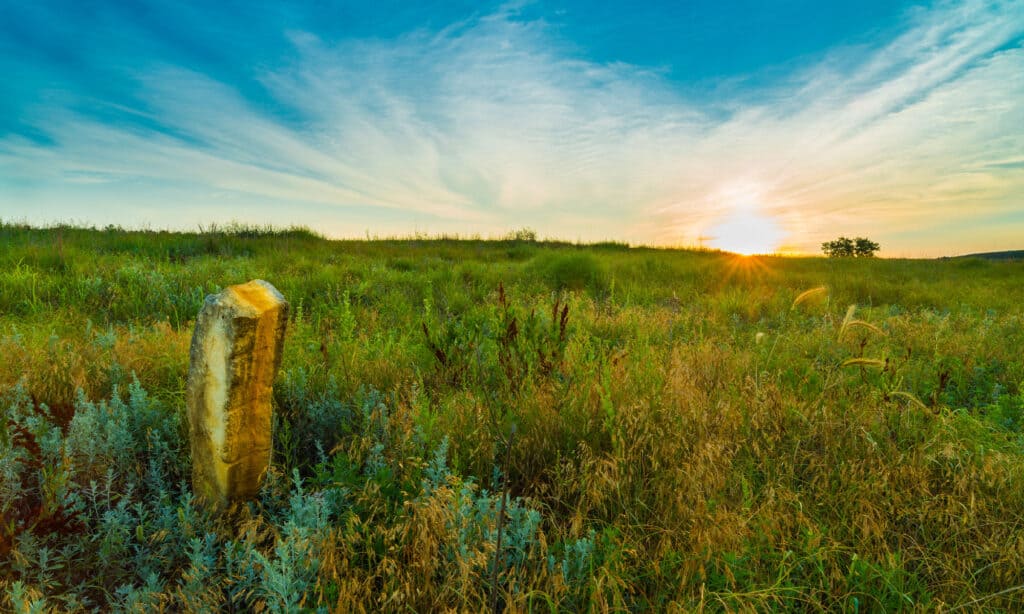
Most federal lands in Kansas are managed by agencies such as the Bureau of Land Management.
©iStock.com/Patrick Jennings
The federal government oversees 253,919 acres in Kansas. That means Kansas is the third state with the least land owned by the federal government. Connecticut has the least amount of land owned by the federal government in the U.S., with 0.3%. Iowa is second, with slightly over 0.3%, and Kansas is third, with 0.5%.
The majority of federal lands located in Kansas are managed by agencies such as the Fish and Wildlife Service and the Bureau of Land Management. Much of this land is for forests and parks. However, there are other parcels owned by the federal government for activities such as grazing and recreation.
Land ownership breaks down to 45.4% of the land owned by the Department of Defense. The Forest Service manages 42.8%. Fish and Wildlife oversee about 11.6%. There are 0.2% of land handled by the National Parks Service and 0% under the Bureau of Land Management.
Overall, there has been a slight decrease in federal lands located in Kansas. Some parcels have been sold off or given back to the state. This means that Kansas has less land owned by the federal government than it did 30 years ago. More responsibility for managing this land is being placed on the state government.
2. Philip Frederick Anschutz — 250,000 Acres
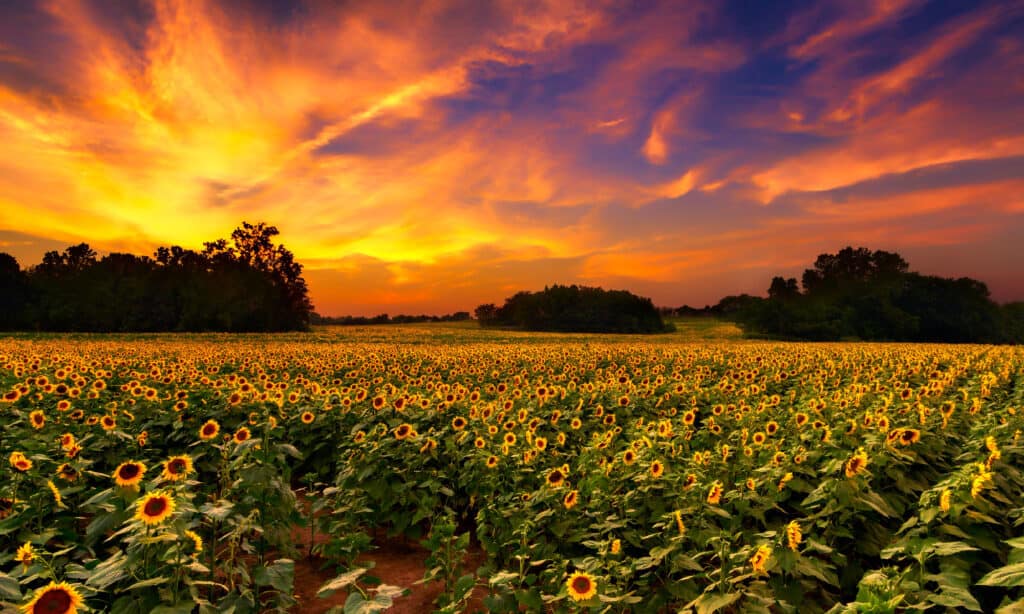
Born in Russell, KS, Philip Frederick Anschutz owns 250,000 acres in the state.
©iStock.com/tomofbluesprings
Philip Frederick Anschutz owns 250,000 acres in Kansas. He’s the owner of Baughman Farms and is one of the largest private landowners in the country. Philip was born in Russell, Kansas, on December 28, 1939, and is among the wealthiest people in the United States. He started his career as a wildcatter and oilman before beginning several other successful businesses.
Anschutz’s fortune comes from investments in railroads, sports teams, media companies, energy firms, real estate, and more. His father and grandfather were land investors, and Anschutz followed their example. He began investing in ranches in Colorado, Utah, and Wyoming. Eventually, he moved into the oil-drilling business too.
In 1970, he purchased the 250,000-acre Baughman Farms located in Liberal, Kansas, for $10 million. Since the purchase, he has worked with Kansas to keep the state’s best interests at heart. While the property isn’t currently under an easement, they are taking measures to protect the land. In the spirit of being ecologically concious, the farm uses crop rotation, renewable energy sources, and more.
3. Ted Turner — 42,479 Acres
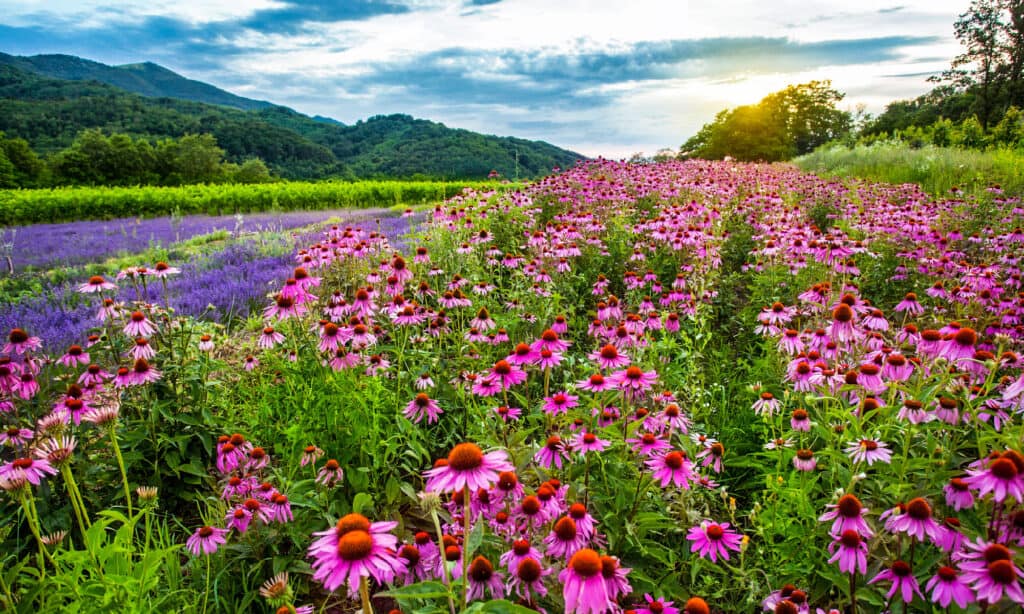
Kansas conservation easements help protect native plants, like echinacea.
©iStock.com/Jasmina81
Ted Turner is the owner of the Z Bar Ranch in Kansas. The location is 42,479 acres and sits right in south Central Kansas. The ranch has six solar live stock well spots. In full sun conditions these wells are able to produce up to 180 gallons per minute! A diverse array of wildlife call the ranch home. There are quails, bobcats, coyotes, pheasants, antelope, and more. Plus, restoration efforts are underway to help increase the golden eagle population. They are even working to reintroduce the black-footed ferrets.
Kansas Conservation Easements Available to the Public
The Wehrle easement is one of the conservation easements available to the public. This 197-acre landholding in Southwest Kansas protects 162 acres of native prairie grasslands with healing plants.
There’s also the Russell easement protecting 53 acres of land. The site is home to 31 acres of completely native prairie. It’s a beautiful spot to see when the sun is rising or setting across the wide open spaces. The land also includes six acres of naturally regenerated wildlife habitat and 16 acres of cropland. The area has a long history of farming and haying.
Linda Evan’s 860-Acre Land Legacy
There’s an inspiring story behind Kansas’s Evans 2 conservation easement. It begins with Linda Evan’s commitment to preserving the 860 acres of her family’s land. All while making a lasting legacy that impacts the conservation of Kansas’ natural environment.
The Lyon and Osage County prairies once belong to Linda’s grandfather Gwilliam Evans. Once Linda came under the ownership of the land, she began to plan for the future. She wisely partnered with two allies, individuals who have been helping make her vision to restore the prairie a reality. The allies are Alex Lyon from Kansas Wildlife Parks and Tourism and Greg Kramos from the federally funded Partners for Fish and Wildlife.
One of the top goals of her project was to restore the tall grass prairie, which had been lost due to overgrazing by cattle. After much trial and error, Alex Lyon and Greg Kramos found a solution: patch burning.
Patch burning is an approach that involves burning just one section of the land each year. The cattle grazing the land move to the burned area and spend most of their grazing time in that portion of the pasture. As the other sections burn, the cattle move on, allowing the previously burned sections to rest and recover.
The method was successful for Linda. The patch-burning method began bringing back wildflowers and improving the habitat for quail and greater prairie chickens. Today, Evans Prairie is thriving! It’s all thanks to Linda Evan’s commitment to protecting her family legacy.
More About Kansas’s National Forests and Historic Sites
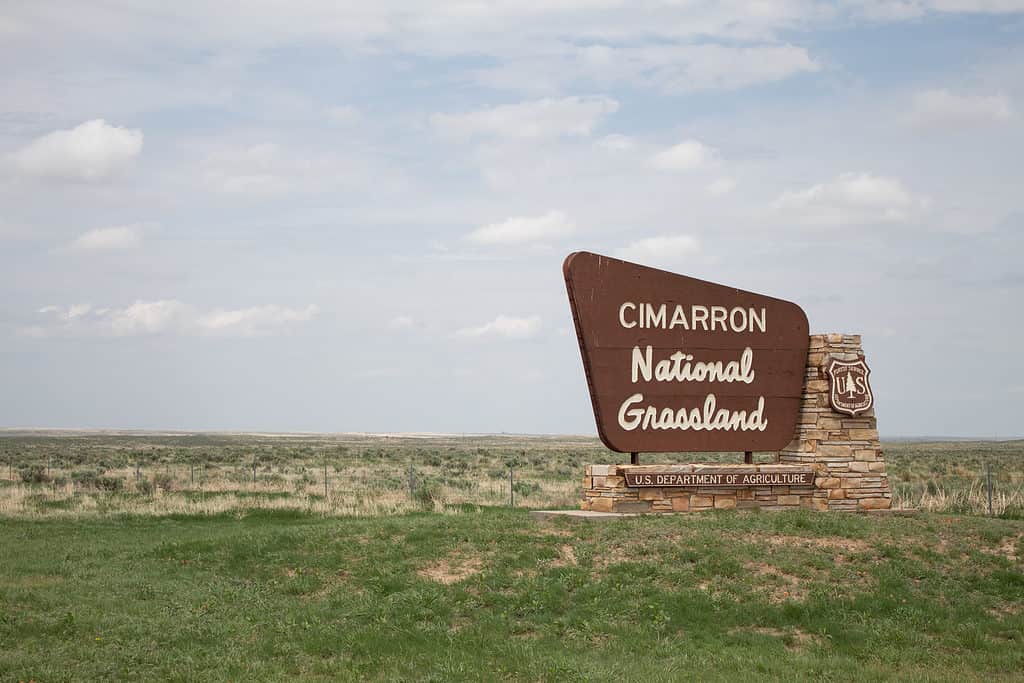
The U.S. Department of Agriculture’s Forest Service administers Cimarron National Grassland in Kansas.
©Madison P Lauer/Shutterstock.com
Kansas is home to the stunning Cimarron National Grassland. The Cimarron National Grassland covers 108,175 acres in southwestern Kansas. The land lies within Morton and Stevens counties. The area came to be in 1938 after drought, and subsequent dust storms devastated much of the land.
The U.S. Department of Agriculture’s Forest Service administers the forest. They provide a wide range of outdoor recreational activities. Visitors can enjoy camping, fishing, hiking, hunting, and more. After visiting the Cimarron, go to the state’s other national sites.
There’s also the Oregon Trail, Lewis and Clark National Historic Trail, and the Tallgrass Prairie National Preserve in Kansas. Over in Topeka, there is the Brown v. Board of Education National Historic Site. The 2-acre site was once a public school for African-American students in Topeka. It’s one of the most important landmarks in the history of the civil rights movement and a reminder of the fight for racial justice.
Nestled in Western Kansas, just 110 miles northwest of Wichita, lies the Fort Larned National Historic Site. This remarkable 410-acre attraction showcases restored 19th-century U.S. Army buildings. It’s one of the best-preserved forts around.
Final Thoughts on Top Landowners in Kansas
Now you know about the top landowners in Kansas. The federal government and the state’s land trust work together to benefit the environment and its inhabitants. Conservation efforts include restoring and protecting native grasslands and plant species and expanding access to natural resources such as rivers and streams.
This commitment to conservation also provides important economic opportunities for the state’s farmers and ranchers, who can now access much-needed resources from these landowners. In addition, local schools and communities benefit from the increased access to recreational areas provided by these landowners.
What else should you know about Kansas? The state is full of fascinating things to learn about. From the state’s geological formations to its diverse wildlife, there are many opportunities for exploration and education.
Who Is the Largest Landowner in the United States?
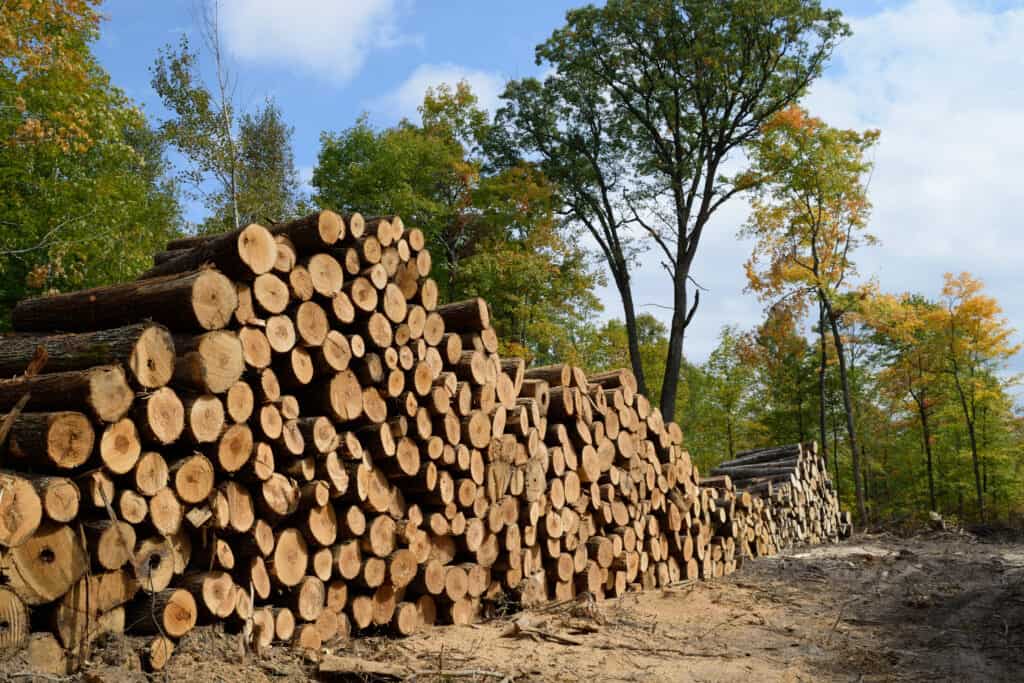
Owned by the Emmerson family, Sierra Pacific Industries is one of the biggest lumber producers in the U.S.
©ClubhouseArts/Shutterstock.com
Now we’ve had a look at the three largest landowners in Kansas, you may be wondering who owns the most land in the whole country.
The largest private landowner in the U.S. is the Emmerson family. They own around 2.4 million acres of land. Archie Aldis Emmerson (known as Red Emmerson) is the founder of Sierra Pacific Industries (SPI), which is the one of the biggest producers of lumber in the nation, owns 18 sawmills, and manufactures products including windows. The Emmersons’ landholdings in California, Oregon, Washington, and Wisconsin include close to 78,000 acres of timberland in Northern California purchased from descendants of Thomas Barlow “T.B.” Walker.
Based in Anderson, CA, the third-generation family-owned SPI uses sustainable forestry processes and plants more than 7 million new trees every year. It is dedicated to renewable energy sources, and has bought wind farms and biomass power plants.
The Emmerson family took over the top landowner spot from media tycoon John Malone, who has stakes in Discovery Communications, the Atlanta Braves, and Liberty Global cable provider. The second largest private landowner, he who owns 2.2 million acres in the U.S. This includes forest and ranch lands in Colorado, Maine, New Mexico, and Wyoming.
Another billionaire media mogul, Ted Turner, the founder of CNN, owns 2 million acres over eight states in the U.S. He owns more than 18 ranches as well as farms and hunting preserves.
The photo featured at the top of this post is © Ricardo Reitmeyer/Shutterstock.com
Sources
- Growing America Report, Available here: https://kansas.growingamerica.com/news/2013/10/100-largest-landowners-2013-listed/
- Kansas Historical Society, Available here: https://www.kshs.org/kansapedia/seward-county-kansas/15342
- Balletopedia, Available here: https://ballotpedia.org/Federal_land_ownership_by_state
- Kansas Land Trust, Available here: https://www.klt.org/properties
- Successful Farming, Available here: https://www.agriculture.com/news/kansas-ranch-sells-for-834-million
Thank you for reading! Have some feedback for us? Contact the AZ Animals editorial team.






